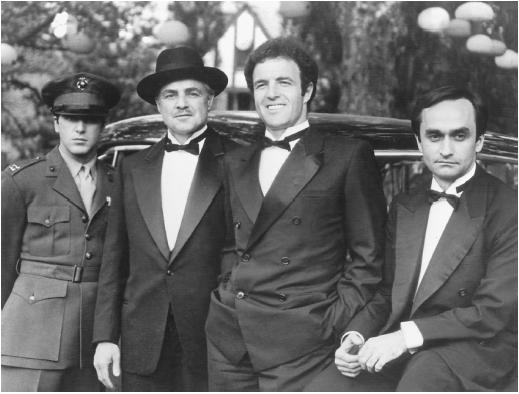
The concluding film of The Godfather trilogy released 16 years after the second film does not recreate many of the original thrills. The earlier films seemed to take the best from the pulp gangster films of Howard Hawks with the developed traditionalist mise-en-scene of Jean Renoir to create the perfect hybrid between art and entertainment. The film is interesting to observe through an auteurial point of view, considering many Coppola themes. These themes include moral ambivalence, motivation for success and family conflicts. Like the other films in the trilogy, The Godfather III evokes a feeling of moral ambivalence in the audience: the audience both savors and regrets the on-going crime and violence. Where the former films emphasized the role of Italian culture of tradition, honor and strength the third is grounded on the yuppie movement that emerged in the 80s with Vincent Mancini, Andy Garcia, desire for personal advancement founded on ownership and consumption of material goods. Its concern on the conflicts that emerge in a family with so many strong individuals reached an epoch in this film where all the Corleone family members are all pursuing their own goals. If you follow the series their are many identifiable traits of Francis Ford Coppola imposed on Micheal Corleone. As the first film begins Micheal as a outsider who eventually returns to his family. This outsider personality was Mr. Coppola world view of the time. Prior to The Godfather he was making personal and independent films with his movie-production company Zoetrope. Only in dire time when faced with bankruptcy was he forced to make a commercial ganster picture. By the time of The Godfather: Part 3, he has turned his attention from making personel films to business, a wineyard, a hotel resort and still produced and directed. His family has then fully emerged in the film industry with his daughter Sofia Coppola was an actress and is now a filmmaker, Roman Coppola is a filmmaker and music video director, and his eldest son Gian-Carlo Coppola helped with Francis Coppola films until he was killed in a boating accident at the age of 26. It is this strong indepedent family that he is trying to recreate in the film. He gets his daughter Sofia Coppola to continue her role of Mary Corleone, she was uncredited in the formers, and he gets his friend, Martin Scorsese, mother Catherine Scorsese, one of the sweetest old ladys, to play the role of a woman in a cafe. Their are narrative and psychological gaps throught out the film that seem unbeleivable. Why would Micheal bring this quasi-stranger Vincent into his family and in such a short period of time make him the residing Godfather? Why are Vincent and Mary starting a inter-family relationship? Where are the police in all of this and what are their roles in the epic helicopter massacre? and why is Sofia Coppola such a terrible actress? There are many characterizations, stereotypes and situations that have been a tremendous influence on the gangster film genre, many of which can be seen in the successful television show The Sopranos. One memorable quote takes place when Micheal Corleone is brought back into the life of organized crime and he says "Just when I thought I was out... they pull me back in." The latter films looked heavily forethought with a strong sense of mise-en-valeur while the former film scenes are usually bare of visual elements. Which itself seems more suited for a soap-opera melodrama. As a whole the film is interesting and insightful in the psychology and life of a strong individual and his interactions with family, friends and business partners. The film ends with a lonely vulnerable Micheal Corleone. He has has lost all the women in his life he has loved through his perceverance in the life he chose and all he has left is his thoughts and memories. What would have happened if Micheal had never decided to not go to Vito Corleone aid.-David Davidson
No comments:
Post a Comment